Blackwater Mill
Blackwater Mill
It is a 6 storey water mill on the River Blackwater was built towards the end of the 18th century, a time when Navan was a prosperous trading centre.
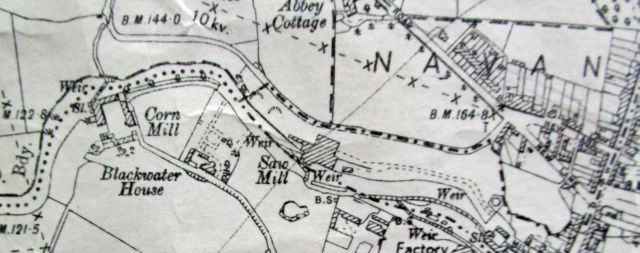
(above) Map showing the location of the Blackwater Mill, the corn mill just above Blackwater House, where the Spicers lived for a while.

A plaque on its wall dates it to 1783, and names
Conolly, Clarke and Fay as its owners.
These men were a Dublin merchant James Conolly,
a Dublin brewer William Clarke, and John Fay, a Navan man.
When built, this extensive corn mill on the Blackwater was described as "perhaps the most extensive in point of storage in Ireland." (Thompson Statistical Survey of Meath, 1802, p.50)
The original mill was driven by a large undershot water wheel.
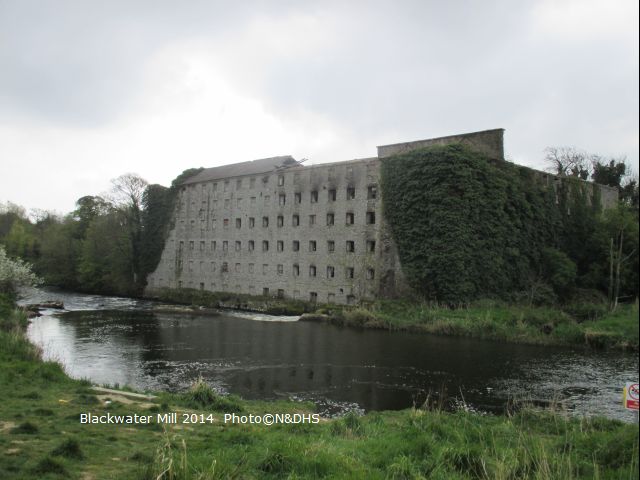
According to a 1791 lease, £2000 had been spent extending the premises. As well as corn, a brewery and distillery were attached to the mill. Great quantities of whiskey were being distilled in Navan at this time.
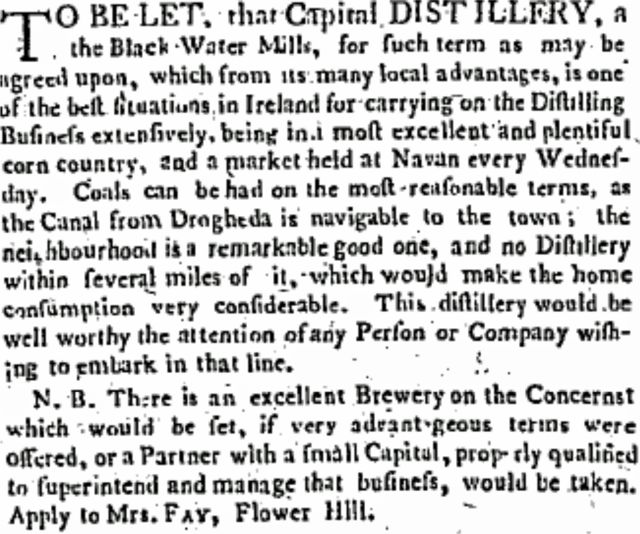
(above) Interesting extract from The Freeman's Journal, 14 November 1807
John Fay was a prominent Catholic business man in Navan. He donated money for the widening of Trimgate St. in the 1790s, and a plaque relating this can be seen on the wall of Ryan's Pub today. Although he was made a Freeman of the town, as a Catholic he could not become a member of the Corporation. A sectarian attempt to frame him in 1793, for the murder of Revd Thomas Butler, a magistrate at Navan, failed, as the case against him collapsed. These events showed a deep seated resentment of the growing economic power of members of the Catholic middle class such as John Fay. [Revd. Butler had been murdered by Defenders, who were eventually arrested, tried and hanged.]
See the Trial of John Fay
In 1817 the mill was being run by Richard and John Fay.
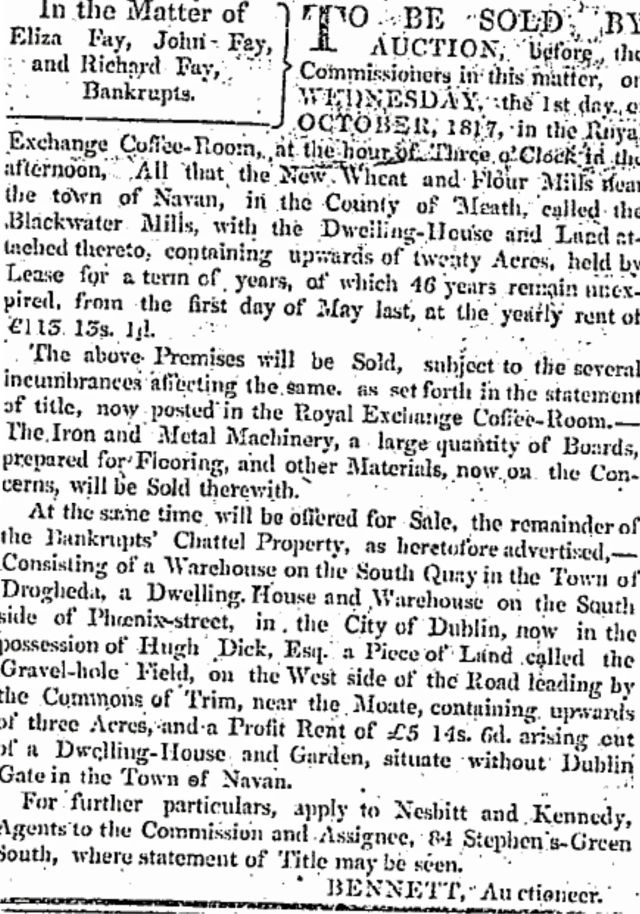
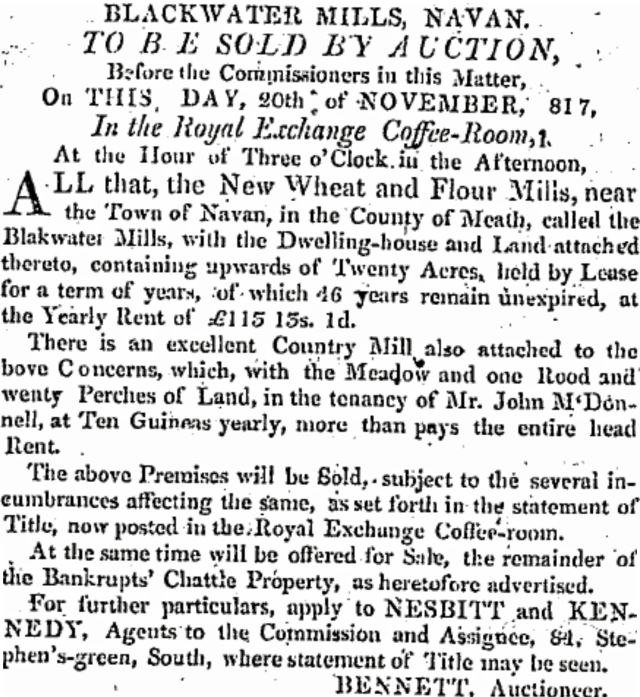
(above) The year 1817 was not a good year for the Fay family and the Blackwater Mill as seen from these newspaper extracts from the Freeman's Journal 29 Sept 1817 and the 20 Nov 1817 respectively.
The Griffith Valuation of 1854, shows that R.H. Skelly was now the leaseholder of the mill, leasing it from the Earl of Essex.
John Spicer subsequently bought the mill, and in 1885, installed the latest type of Simon Roller Mill, which improved the capacity of the mill and the quality of the flour. The water wheel was cut in half to enable a floor to be built over it.

Pictured above is the front of the mill in 2004 showing 20th century galvanised extensions. The 'Conolly, Clarke and Fay' plaque is located on the stone wall near the galvanised structure on the left. There is another plaque just above the door which is located just to the left of the car in the picture above. It is oval in shape and shows a ploughman and plough.

Pictured above is an aerial view of Blackwater Mill taken in 2005. Note the damage to the weir. (Photo Richard Farrelly)
Today Blackwater Mill stands idle. The original mill buildings are still standing, although a good part of the roof has collapsed in recent years - a sad testament to its former glory. Below are some wonderfully evocative photos of the interior of the mill. Photos thanks to Denis O'Donovan.
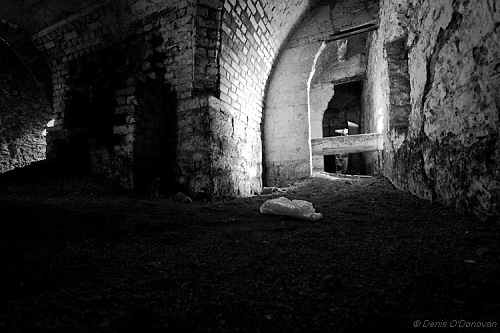
Possible kiln for drying corn
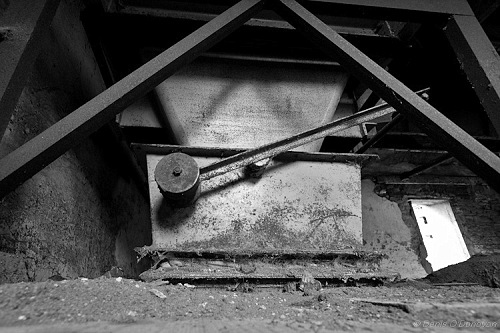
Blackwater Mill - Possible grain hopper

Ruined interior
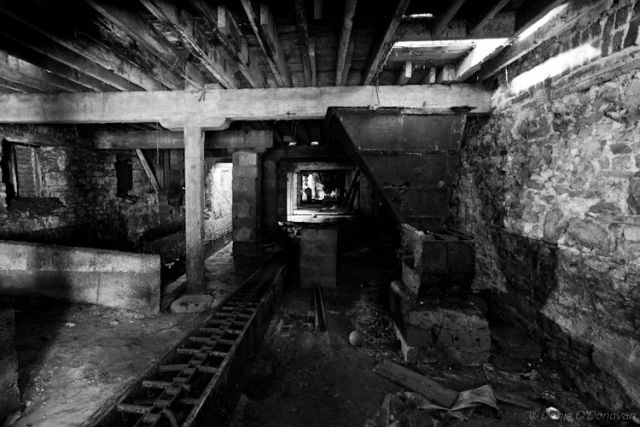
Stone walls and wooden beams
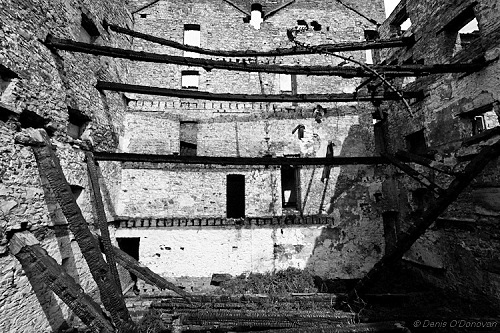
Blackwater Mill - part of the ruined interior
Possible aperture for a bell, top centre
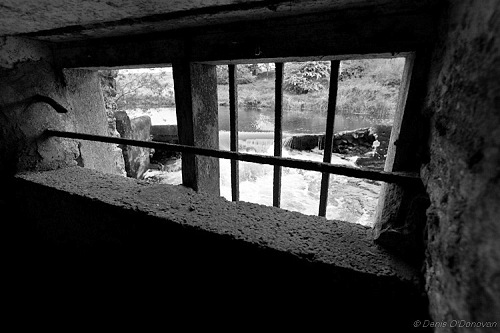
Looking out towards the weir
Sources:
The Land and People of County Meath 1750- 1850, Peter Connell, Four Courts Press, 2004
Milling on the Blackwater, R.J. Farrelly, unpublished thesis 2005, NUI Maynooth Certificate in Local History
The National Inventory of Architectural Heritage
Photos: Denis O'Donovan and N&DHS